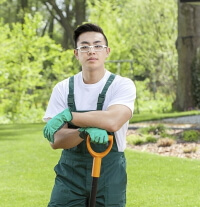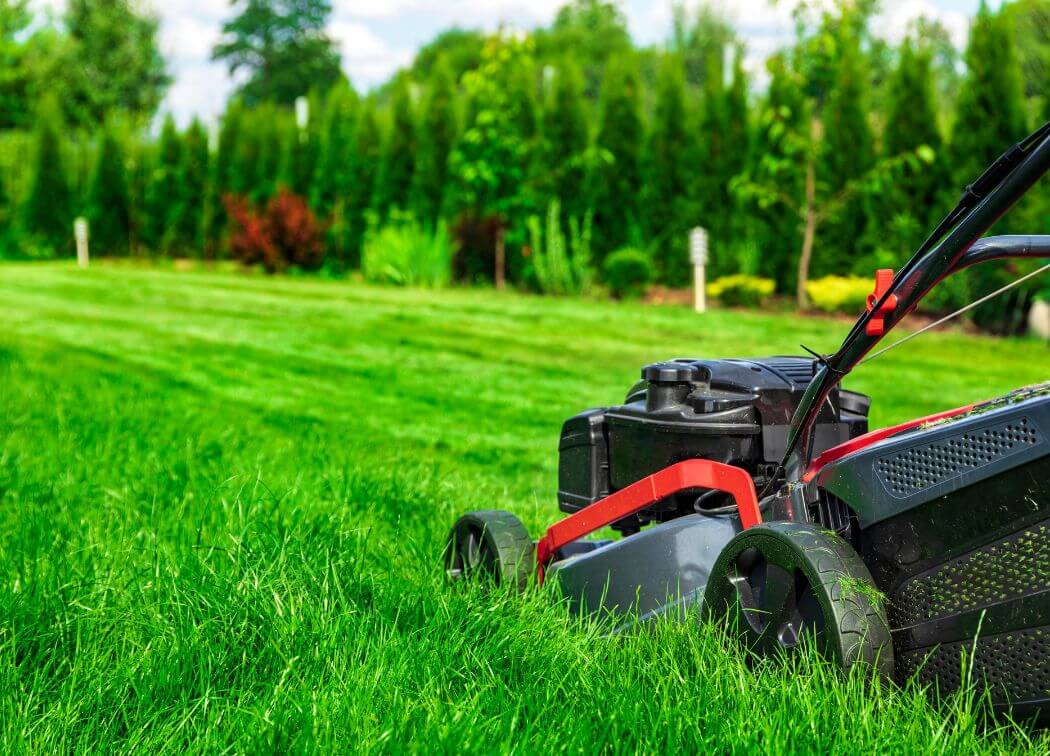Every lawn owner’s been tempted to cut grass after a light amount of rain. After all, why should a little bit of moisture stop you from proceeding with your scheduled lawn care?
We don’t recommend you to cut wet grass, it is much better to wait for it to dry before mowing. Mowing wet grass can damage your lawn-mower, creating an uneven cut. These wet clippings clump together, doing more harm to you and your lawn by exposing it to diseases and you to injuries.
Let us go over why cutting grass after it rains is bad and tips to make cutting wet grass a feasible option without hurting yourself or your lawn mower.
Is It Bad to Mow Wet Grass After It Rains?
Yes, it is a bad idea to mow wet grass after raining! A wet lawn is an indicator of muddy soil, which can cause your lawn mower to fall and stick to the soil, which is bad for both you and the lawn.
Ruining your mowing will lead to uneven cuts and clumps forming from the wet clippings. These can create turfgrass fungi, threatening the health and safety of your lawn.
The ideal situation is waiting for it to dry to get a clean-cut, allowing you to mow grass and catch all the clippings in the bag, leaving lawns clean and disease-free.
Here are a few detailed reasons why it is bad to mow wet grass and how you can proceed with cutting wet grass on your lawn if you have to.
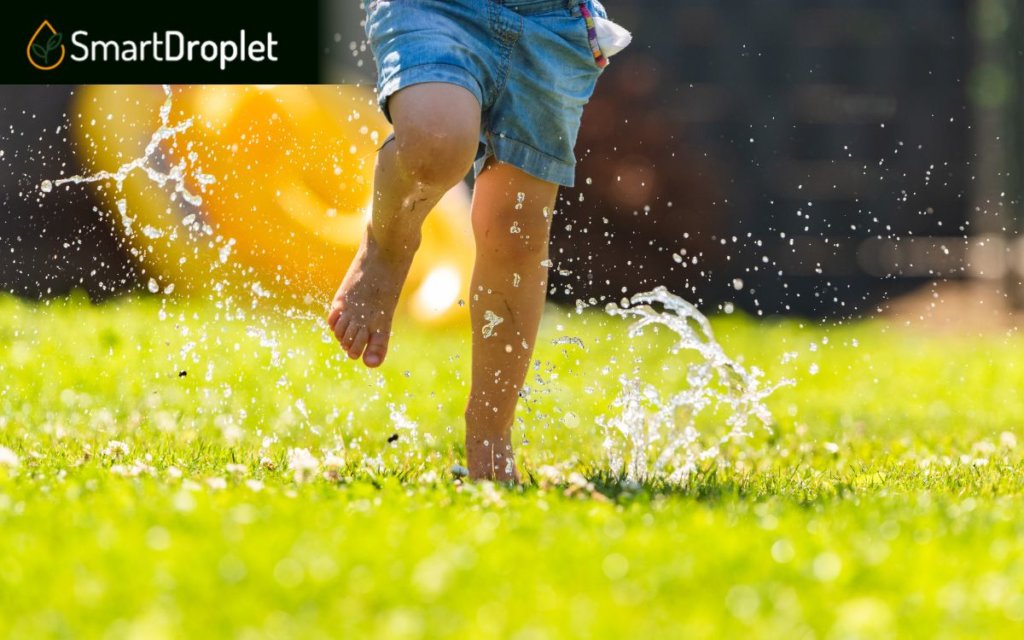
Why You Should Not Mow a Wet Lawn
Wet conditions are not always the end of the world for your lawn since morning dew does not pose a serious threat. However, the rainy season can turn wet grass into a different beast.
Here’s why mowing a wet grass lawn is to be avoided as much as possible:
You Can Damage the Lawn Mower
Mowing grass with an electric lawn mower is a pleasant, even therapeutic experience. But if you mow your lawn and your mower falls apart, you’ll have more than a bad time.
To properly mow wet grass, your lawn mower will need a wide deck that goes as high as possible to avoid waterlogged areas and large, durable mower tires.
If you push through with cutting wet grass and your push-behind lawn mower isn’t up to the task, there’s a high probability it will clog, and that single pass will be the end of your machine.
Electricity and water don’t mix well, and when you use an electric lawn mower or strimmer, there’s a possibility that you can get electrocuted mowing a lawn filled with wet grass.
Gas-powered trimmers are also at risk because their fuel gets contaminated when the clippings fly in. They also cause blockages which can halt and eventually destroy your machine.
The lawn mower machine likely won’t start again, and if it does, your lawn may suffer instead from rut damage created by the wet, soft ground and large wheels coming into contact.
Saving time by trimming damp grass isn’t worth the price you pay to repair damages to your machines. Avoid damaging your machines by waiting for optimal (dry) mowing conditions.
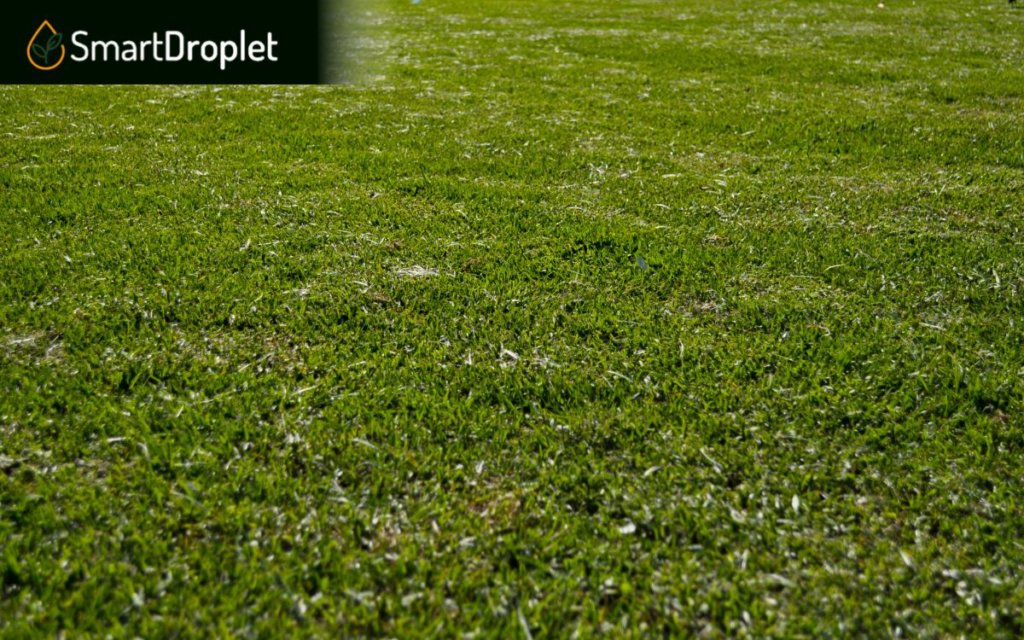
Uneven Cutting
When you cut wet grass, it will bend closer to the ground due to the weight of the rain-bearing down on the grass blades. This is the opposite of what we want, which is upright.
Proper lawn care includes cutting it evenly to ensure it grows equally. However, when you mow wet grass, your mower will avoid the low-lying grass blades, creating an uneven cut.
You will need to cut closer to the soil, and when soil is soft due to rain, it can clog your mower and add to your problems. At the very least, you’ll need multiple passes to get even cuts of it.
Grass Clippings Clump on the Lawn
Mowing grass after rain is one of the easiest ways to create ugly clumps of grass clippings on your lawn. Choosing to mow your lawn when wet grass is set up for disaster.
Grass clippings that form clumps on your lawn tend to trap moisture and, if left unattended for extended periods, can expose your turfgrass to all kinds of fungi and diseases.
The best way to avoid this is to wait for it to dry to better shred and spread clippings instead of cutting unevenly and creating clumps.
It is also important to monitor the mower deck to avoid clumping, a problem found in air tapered decks. If that’s not enough, you may want to use a drag mat to clear any debris.
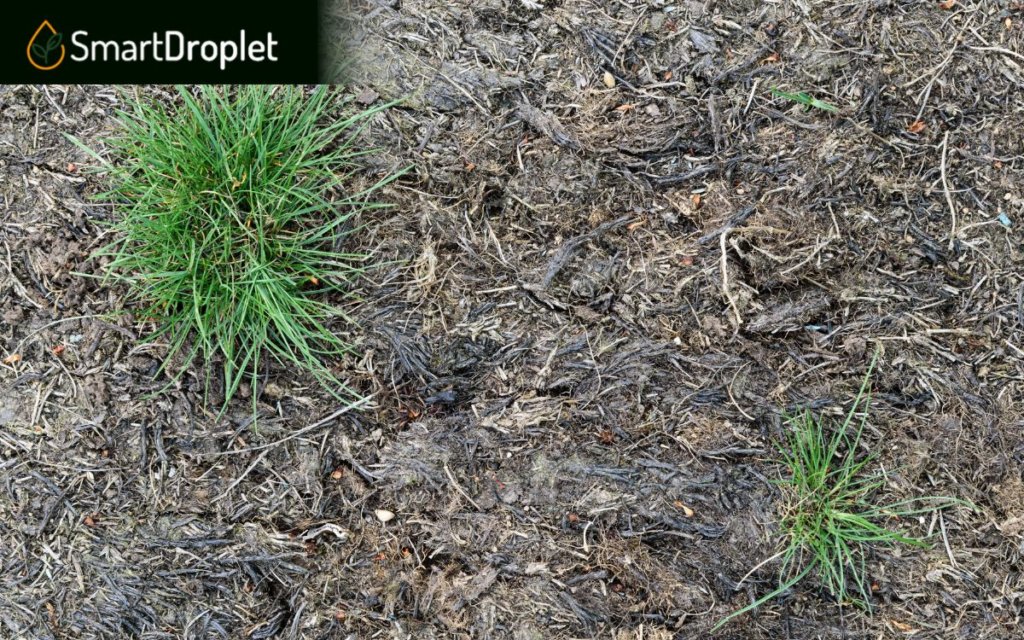
Easy Spread of Diseases
The rainy season increases infection rates exponentially. Lawn care requires protecting your lawn from diseases spread in patches of grass that clump together when cut.
These diseases spread when you do not wait to mow your lawn and choose to cut wet grass after the rain; the risk of infections increases when the soil is compacted due to rain.
Should your turfgrass begin showing signs of infection, the key thing to do is let it dry up completely and then cut the grass blades down to size with your lawn mower.
It Is Too Much Work
Aside from not having steady footing and not being able to cut all the grass needing to be cut in one go, wet lawn turf also causes grass clippings to clump and clog your machine.
This adds to the difficulties you’ll encounter when dealing with an unruly, wet lawn. You will create more stress and more physical effort than if you just waited for dry grass.
By waiting for it to dry completely, you can save yourself time and effort and have a more worry-free and disease-free lawn maintenance experience.
Here’s How Much More Work You’ll Have to Do if You Cut Grass After It Rains:
- You will need to dry your wet lawn by removing the dew using a drag mat.
- You will need to walk around and inspect your lawn to see the areas to avoid and determine which waterlogged areas you will need to pay attention to.
- To prevent fungi and diseases from spreading, you will need to remove the clumps of grass clippings, requiring multiple loads with your mower bag.
- You will need to move carefully and avoid a clog. If you continue to cut wet grass, your machine might malfunction and stop working.
It is best to use an industrial gas mower to deal with high volumes of grass blades and perform with durability and consistency when cutting a wet lawn.
You Risk Slipping
This con is fairly straightforward, as wet grass and a wet lawn can get quite slippery. It doesn’t help that the soil feels soft, so you might stick your foot in and fall face first.
Muddy soil will not only ruin your clothes, but anything faster than a leisurely walk around your yard may lead to a muddy and injury-filled experience.
If you are not careful, you might slip and sprain or dislocate your leg. You may even hydroplane and lose control when riding an industrial lawn mower.
These mobility problems compound after heavy rainfall, so your best chance of avoiding injury is to stay away from the lawn until it dries completely.
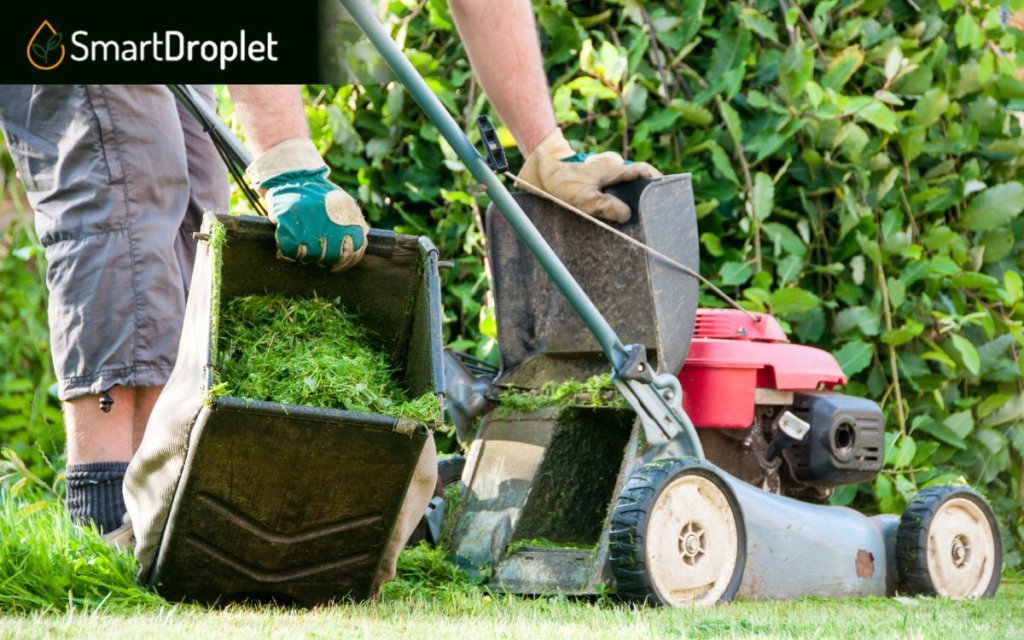
How to Mow a Wet Lawn
Cutting wet grass is to be avoided at all costs, but if you really must, such as when it grows too tall in the intervening period between sun and rain, it’s better to be safe.
Here are some tips to help you cut wet grass after it rains. These are meant to protect you, your lawn, and your mower.
1. Sharpen the Blades of Your Mower
You will need a sharp blade to be able to cut wet grass after the rain. Your mower should be able to mow wet grass by pushing it into an upright position for the blades to ding them.
Otherwise, a blunt blade combined with wet grass will force your pesky plant life down to the surface of your lawn, making it near-impossible to get a proper, consistent cut.
2. Use Mowers With Large Wheels
Mowing wet grass with a heavy-duty lawn mower means that it’s not just wet grass that gets affected but also the soft ground. These can create rut damage on your soil.
To avoid tearing up your yard the next time you mow grass, it is better to use a mower with wide wheels. These wheels spread on the surface of the soil better, preventing sinking.
Having wide wheels lets them spread the pressure and keep your mower above the soil. If you want to stay safe, it is better to wait for the Turf to dry and mow.
3. Use a Gas-Powered Lawn Mower
The right mower for the job when you cut wet clippings is gas-powered because it allows you to cut grass without the risks of electrocution that electric cutters have.
When you mow your lawn after it rains, it is best to use grass cutters with serrated blades to catch those tough-to-reach blades.
However, serrated blades are usually found on industrial lawn cutters and may be out of the budget range for average lawn owners.
Instead, it is recommended to spray silicon or lubricating oil underneath your lawn mower to prevent it from sticking to the mower deck.
4. Raise the Mowing Deck
Aside from using larger wheels, it is important to raise your mower deck (protects users from blades and debris). This tall mowing height allows you to protect your engine from stress.
The more moving parts you have when mowing your wet yard and lawn, the more likely you will damage your mower. Raising your mower deck lets you protect one part of your machine.
Raising your cutting deck ensures smoother passes and prevents debris from getting fed into your engines. This high height allows you to mow 2 more times a week if it is less effective.
5. Cut the Grass in Smaller Swatches
When you walk across your yard mowing wet grass, it is best to cut it in small swatches compared to the normal plant amount you mow.
Passing in thinner lanes reduces the grass amount you get in a single pass. This helps because water makes it heavier. By reducing the load, you can prevent overheating.
This small step ensures that your engine can handle the demands of your lawn without falling apart or getting overwhelmed.
Do not make any sharp turns with your mower when cutting small swatches. Mow in straight lines to prevent injuries.
6. Discharge the Clippings
When mowing wet grass, clippings get heavy fairly quickly. Your bag will get filled fairly quickly, and it can become dirty, off-color, and may even get damaged.
To prevent the blades from ruining your bag, it is important to discharge the clippings in your mower back onto the Turf. Make sure to do this after you mow to protect your mower bag.
7. Clean the Clippings off the Turf
After mowing wet grass after it rains, the blades of the plant will stay on the ground. This is no longer a job for your mower. You will need to rake and collect the clippings from your lawn.
It is important after using your mower that you clean up all the layers of debris and not just mow wet grass. If you spread it properly, it can form a nice layer of Turf.
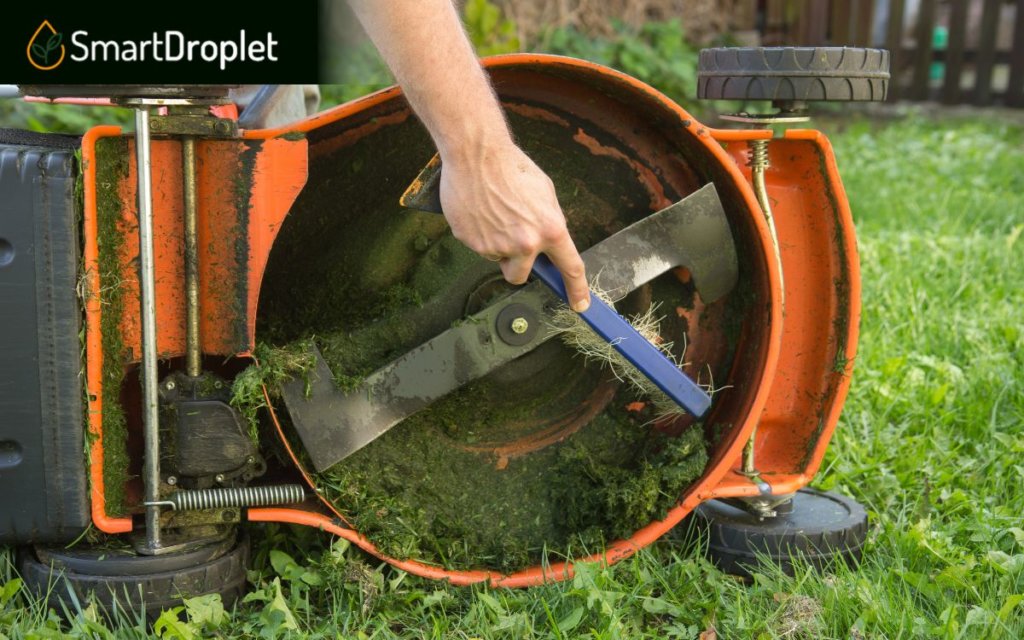
8. Clean the Lawn Mower When Done
Your lawn mower has managed to do the unthinkable: it managed to mow those pesky blades and survived the ordeal. Now it’s time to reward your machine by cleaning it up.
It’s important to remove any grass clippings stuck to the blades and the mower deck to prevent moss and fungi from growing on your machine and spreading back to your lawn.
This is done to prevent invasive growth from using your mower as a transmission vehicle and prevent rusting blades and metal parts.
This is also why it’s important to drain fuel on gas mowers. Any mower that gets its fuel tank filled with unnecessary moisture will lose its ability to start up when you need it to.
Keep these in mind the next time you mow it.
Frequently asked questions
Here are some more important points to remember when mowing wet grass. Keep these in mind the next time you need to mow your lawn.
How Wet Is Too Wet to Mow Wet Grass?
There are a handful of moments where you will be able to cut wet grass despite the rains and still come out successful. However, mowing wet grass that is too damp will ruin your lawn.
Here are some markers to determine whether it is too wet to cut properly:
- If the rain causes the ground to be slippery and soggy, do not risk mowing your lawn. This will create uneven cuts and cause you to fall face-first and injure yourself at worst.It is better to wait for the ground to harden again and for it to dry.
- If you use an electric lawn mower powered via a cord, any wet grass is too wet. Never let the cord touch anything wet, or you will get electrocuted by your machine.
As much as possible, do not cut wet grass. Please wait for it to dry to prevent injuries and complications with your equipment and lawn.
How Soon Can You Mow the Lawn After It Rains?
We will have to determine how wet your lawn is to answer the question. If a light layer of rain brings about your wet grass, you will only need to wait for 2 to 5 hours before mowing.
However, the rainy season will require you to wait even longer, as the grass dries slowly, especially when it’s experienced a large rainfall. You will need to hold off for around a day.
If you wish to cut wet grass, you can take pressure off your lawnmower by removing the dew to make it lighter and easier to mow. Rains will require a patient to wait for it to dry.
Conclusion
Although it is possible to mow wet grass after it rains using a sharp blade and a powerful, heavy-duty mower, it is best to avoid your wet lawn and wait for it to dry before cutting.
This way, you can prevent clumping from forming disease-ridden fungi, keep your lawn healthy, lawn mower intact, yard nice and trimmed, and injury-free.
References
- The University of Arkansas System, DIVISION OF AGRICULTURE RESEARCH & EXTENSION: Mowing Your Lawn

